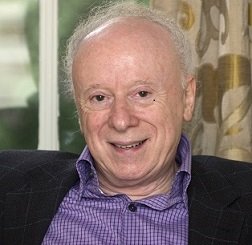 Advances in sciences and the arts often result from synergistic interactions and symbiotic relationships between pairs of individuals. An example of such interaction in the arts is the nature of the Matisse-Picasso relationship. This year’s Albert Lasker Awards in Medical Research honor two pairs of individuals whose accomplishments illustrate the power of scientific synergy and symbiosis.
Advances in sciences and the arts often result from synergistic interactions and symbiotic relationships between pairs of individuals. An example of such interaction in the arts is the nature of the Matisse-Picasso relationship. This year’s Albert Lasker Awards in Medical Research honor two pairs of individuals whose accomplishments illustrate the power of scientific synergy and symbiosis.
Synergy and symbiosis à la Matisse-Picasso
Far-reaching advances in the medical sciences often result from symbiotic relationships between two scientists. Such pairs or duos achieve success by establishing what I will call a ‘scientific duopoly’. Like twins, there are two types of scientific duopolies — the conjoined type and the separated type. The conjoined duopoly is exemplified by Rodgers and Hammerstein and the separated duopoly by Matisse and Picasso. Let me explain.
In a conjoined duopoly, two scientists work together intensely on the same problem in the same laboratory over many years in much the same way that Rodgers and Hammerstein collaborated daily for 19 years to produce the world’s most beloved musicals. According to Richard Rodgers, the secret to their success was their ability to think aloud and trade ideas in a constant dialogue, which allowed them to quickly get rid of the many bad ideas so that the rare good ones could be discovered.
In the 56 years of Lasker Awards, 16 Laskers have been given to pairs of scientists whose prize-winning research was done as a conjoined duopoly. The list includes Watson and Crick, Hench and Kendall, Boyer and Cohen, Bishop and Varmus, and Kohler and Milstein — not to mention Brown and Goldstein. The Lasker committees somehow overlooked four equally conjoined pairs — Hodgkin and Huxley, Jacob and Monod, Hubel and Wiesel, and Ellion and Hitching. These four duopolies went directly to Stockholm without a dress rehearsal in New York. One Lasker committee even went so far as to perform a surgical detachment of a conjoined pair. In 1950, they honored Beadle without Tatum!
The other type of duopoly, exemplified by Matisse and Picasso, is the separated type. The twins are not conjoined, but their work is interdependent and synergistic. Matisse and Picasso never worked together, but over a period of 50 years they inspired and influenced each other’s work. Despite their different styles, they studied each other assiduously, borrowed ideas from each other, and, most important, tried to outdo each other. Their interaction was like an ongoing game of chess between two masters, and the results were the spectacular ‘Matissean Picassos’ and ‘Picassoesque Matisses’ that defined modern art.
This year’s Lasker Awards for Research will be presented to two duopolies of the separated type — Rothman and Schekman for Basic Research and Kolff and Scribner for Clinical Research. As you’ll hear in a moment, Rothman-Schekman and Kolff-Scribner achieved greatness as separated but interdigitated individuals. The presenters will leave it to your imagination to figure out which one is Matisse and which one is Picasso.
Our sole winner for the Lasker Special Achievement Award — James Darnell — is not part of a scientific duopoly, but as you’ll soon hear, Jim is the patriarch of a scientific dynasty.
The Lasker Basic Medical Science Award will be presented by Michael Brown, who is the Regental Professor at the University of Texas Southwestern Medical Center in Dallas. Mike is a recipient of the Lasker Award, the Nobel Prize, and the National Medal of Science. But most important of all, in light of our discussion of scientific pairs, Mike and I are a conjoined duopoly, struggling for 30 years to solve the mysteries of cholesterol. We’re not as quick as Watson and Crick, who solved their problem in two years. Obviously, cholesterol is harder than DNA.
After Mike presents the Basic Award, I will present the Lasker Clinical Medical Award. This will be followed by the presentation of the Lasker Special Achievement Award by Eric Kandel, who is a University Professor at Columbia and Senior Investigator of the Howard Hughes Medical Institute. Like Mike, Eric is also a recipient of the Triple Crown of biomedical science — the Lasker, the Nobel, and the National Medal.
